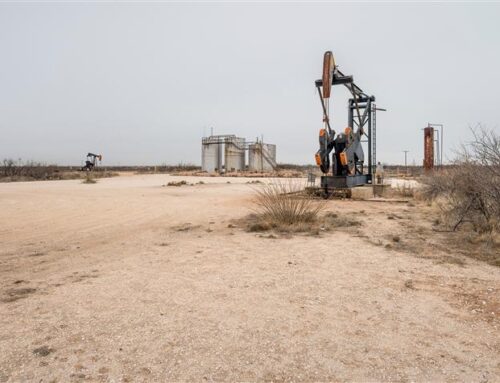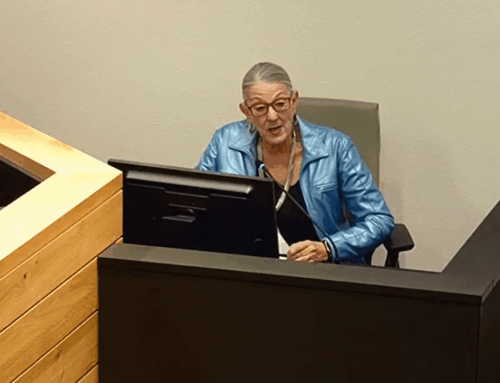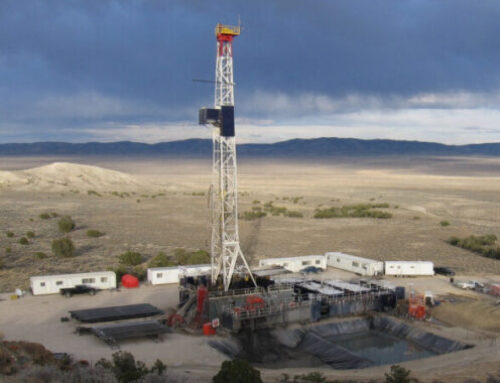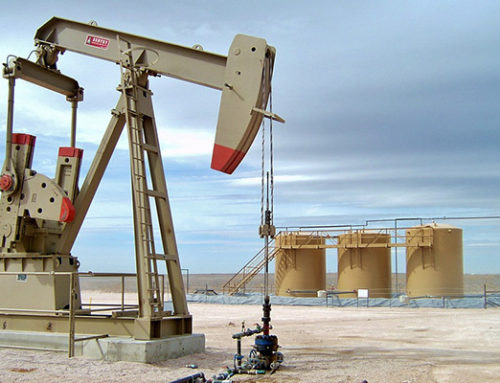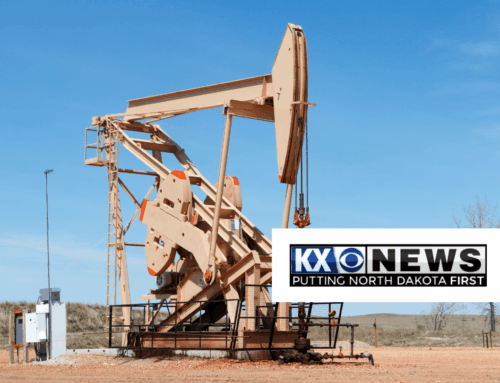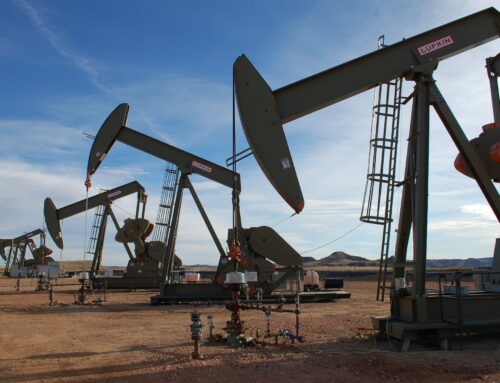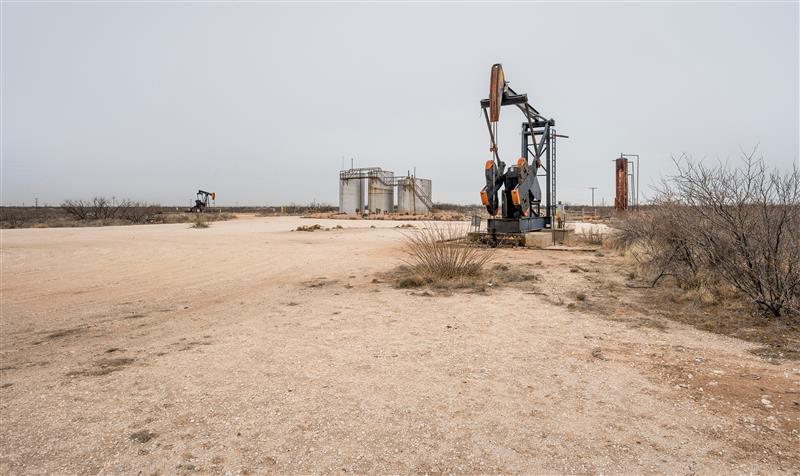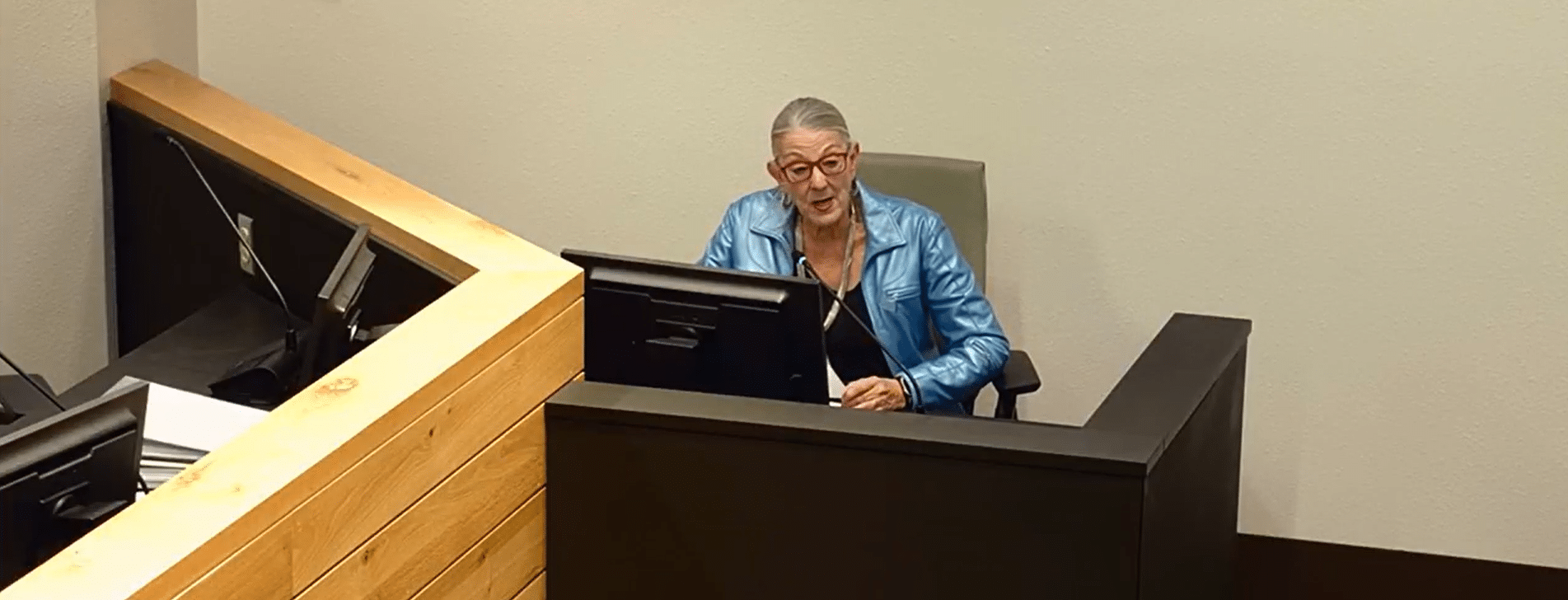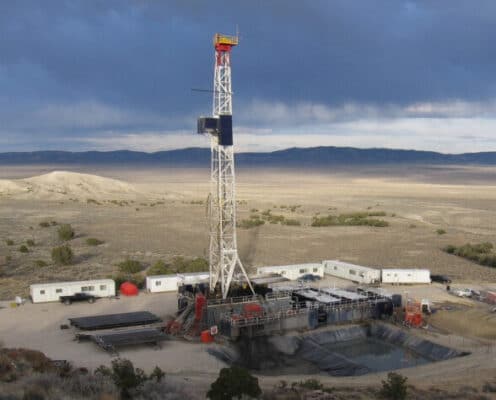It doesn’t take much to get Mark Hieronymus worked up. We’re walking down an old logging road next to a creek outside of Juneau, and the guide is going back and forth on the two hottest topics in Alaska: fishing and logging.
“We’re going to fish that sexy little beast on the way back,” he says as we pass a deep pool. “Always Dollys in there.”
If you were to imagine an Alaska flyfishing guide, you’d conjure up something close to Hieronymus: flat-brim hat pulled down over dark shades, bushy beard, gravelly voice, and descended from a line of Pacific Northwest fishermen. He grew up fighting steelhead on the rivers of Puget Sound and then chased better fishing and job opportunities to Alaska in 1988. Like most people who spend their lives on a river, his personality shifts from laid-back to intense, depending on the topic of discussion.
The Trump Administration and governor Mike Dunleavy have reignited interests in old-growth logging in this region. So eventually I ask Hieronymus about the perspective that it’s mostly outside environmentalists who are hell-bent on fighting logging—not real Alaskans. That’s when I see his fiery side.
He shoots back with some facts about the timber industry supporting less than 1 percent of the jobs in the region. Meanwhile, tourism (which includes hunting and fishing) and the seafood industry make up 25 percent of the jobs there, according to Trout Unlimited, the nonprofit that Hieronymus also works for. He says the call to revive logging in southeast Alaska is used as a political football that legislators toss around to fire up their base and win elections.
“They talk about outside interests having too much control,” Hieronymus says, “and I’m like, F you, I’m right here.”
Then we pass an elevated culvert that was built with the logging road, and he points out how obstacles like this could prevent fish from swimming up the feeder creek. Hieronymus starts in on how even small disturbances can have an outsized negative impact. As part of his job, he surveys creeks for anadromous salmonids (fish such as steelhead and salmon that migrate from the ocean up rivers to spawn). He follows government protocol for documenting each finding and filing it with the state. Creeks and streams that hold anadromous fish require more permitting for development, but Alaska doesn’t have the resources to fully survey every small waterway, some of which are just a few feet wide. So far, Hieronymus and other TU staffers have added five steelhead streams and 14 coho reaches to the state’s official catalog.
We end up catching a pile of feisty Dolly Varden, which look like trout but belong to the char family. They remind me of brookies but bigger—our largest fish runs 20-plus inches. I’m casting a single salmon-egg bead below a float, tossing it in above a pool, and then letting it drift through. When the float stops, I set the hook and fight another Dolly to hand. The day before, in a stream just a few miles north, I caught migrating coho on a little in-line spinner. The stream was only 10 yards wide, and I could see the red monsters lurking below the surface. When I finally hooked a coho, a male with a crazy long kype jaw, the fish ripped upstream and then went airborne. I managed to shout “Holy—” before he cannonballed back into the water and the fight continued. Still, Hieronymus contends that these rivers are far from pristine.
“Someone from the Lower 48 would come out here and catch a bunch of fish—and probably bigger fish than they’d find at home—and think it’s great. But I’m like, why are there not more cutthroats in this creek? Where are the steelhead? Roads altered this river, and I don’t think we even fully understand the effects.”
What Hieronymus wants more than anything is time to understand the forest and properly catalog its fish before the place is opened to additional road building and logging. The Trump administration announced last spring that it wants to exempt the Tongass from a Clinton-era Roadless Rule (which prevents the Forest Service from cutting new roads into designated wild lands) in order to allow more old-growth logging and development. In October, the Forest Service announced its preferred plan to open 9.2 million acres to potential development.
But exempting the Tongass from the Roadless Rule wouldn’t create an immediate boom in old-growth logging, says Chris French, deputy chief of the Forest Service. I caught him for a phone interview while he was conducting townhall meetings in southeast Alaska on the Roadless Rule issue. The Forest Service would still have to follow the 2016 Tongass Forest Management Plan, which sets limits on timber harvest.
“The quantity of the timber harvest doesn’t change. This is just changing the areas that you would be able to go into, and it still doesn’t allow development in the [most valuable watersheds],” French says. In total, the Roadless exemption would open 165,000 acres of old-growth timber that were previously off limits. Still, critics contend that stripping away the Roadless protections makes the Tongass vulnerable to an extraction-hungry administration. Plus, forest management plans can always be revised.
In a lot of ways, what’s happening in the Tongass mirrors the larger public-land battle that we’re watching play out nationally. Recreation-based economies (which include hunting and fishing) rely on the same resources that have buoyed extraction-based economies for decades. Both sides argue (and truly believe) they have the best interests of the locals in mind, and inevitably the fight gets political. What so often gets lost in the rhetoric are the perspectives of the folks who actually hunt, fish, and live off the land.
The Tongass National Forest is the world’s largest contiguous temperate rainforest and, at almost 17 million acres, it’s the largest National Forest in the U.S. It stretches south from above Glacier Bay, covers the Alexander Archipelago, and runs down to British Columbia.
When the Trump administration announced its development plans for the forest after meeting with Gov. Mike Dunleavy (who campaigned on opening Alaska to more natural-resource extraction), fishing guides such as Hieronymus and the commercial fishing industry saw it as an attack on their livelihoods. Tongass salmon account for 28 percent of the commercial salmon harvest in Alaska, and the industry generates $986 million annually, according to the Forest Service.
“It just doesn’t make sense here,” Hieronymus says. “It’s too expensive to hammer roads through the wilderness. And look what you put at risk.”
But let’s put budgets and revenues aside and focus for a moment on this fact: The Tongass is a sportsman’s paradise.
Mountain goats roam the alpine. Sitka blacktail deer thrive in the old-growth forests. Moose, ducks, and geese are scattered throughout coastal marshes, and brown and black bears are…everywhere. The fishing is just as diverse. For racking up catch-and-release numbers, fly anglers focus on wild Dolly Varden. To fill freezers, anglers target halibut and king, sockeye, and coho salmon in the ocean. Diehard fly guys such as Hieronymus chase steelhead during the spring run and then salmon as they charge up rivers in late summer and early fall.
All these critters are tied into a complex ecological web. Some connections are obvious: Salmon run up rivers and creeks to spawn, then die, and the bears gorge on their carcasses. But those dead salmon also return nutrients to the forest. The most massive trees are found near the riverbanks, fertilized by dead salmon. In turn, the deer rely on these old-growth forests for their wintering habitat. Eagles, ravens, and wolves also feast on the fish runs. Even ducks get in on the action.
“You don’t want to shoot mallards midseason up here,” says Mark Kaelke, Trout Unlimited’s southeast Alaska program director. “They’re all eating dead fish and salmon eggs.”
The entire system relies on two essential elements: giant coniferous trees and clean, cold water.
“We’ve got these ancient old-growth trees that, by virtue of their size, create habitat for deer and stabilize streams,” Kaelke says.
This forest, and the logging practices it would endure, is different from those in the West or Midwest of the Lower 48. Most of the logging here would be commercial clear-cutting—not selective cutting, which is usually helpful to wildlife. Also, the Tongass gets so much rain that wildfires are not a major concern. (Ketchikan, Alaska, receives about 140 inches of rain per year.) Beyond that, the old-growth timber is actually more diverse and better for wildlife than second-growth forests. In the beginning, the new cuts make great browse for deer, but 15 years in, the young trees grow so closely together that they choke out sunlight and undergrowth. They essentially become wastelands for wildlife—and there is no available budget for improving second-growth stands.
When I’m done fishing with Hieronymus, we meet two of his buddies at the Juneau airport and swap our fishing tackle for hunting gear. We’re headed for Admiralty Island, a 1,646-square-mile mass of old-growth forest and muskeg just 10 miles south of town. The plan is to hunt blacktail deer out of a Forest Service cabin we’ve rented there. My hunting partners for the trip are Matt Boline, a Minnesotan-turned-Alaskan who manages Bear Creek Outfitters, the largest flyfishing outfit in the region, and Alan Corbett, an Irish-American whale-watching and fishing charter captain, and distant relative of the legendary big-cat hunter Jim Corbett.
With luck, we’re able to sneak in the short flight between a break in the weather (it’s been raining all week), and the pilot puts us down on a long, narrow lake before the next wave of fog rolls in.
As we cram into the one-room cabin and prep our gear for the afternoon hunt, I ask the guys if there’s a certain-size buck we’re looking to kill. Boline gives me a quizzical look.
“You can hold out for a buck,” he says. “But I’m mostly a meat hunter. Admiralty Island is like my butcher shop.”
More than any place I’ve visited in the Lower 48, Alaska has the strongest culture of subsistence hunting. Residents can kill up to six deer, and both Corbett and Boline are determined to make meat.
We cinch down our raingear and row a small boat across the lake, then start hiking through the towering forest. The terrain is steep and slick with the constant rain; in about an hour, our waxed, waterproof boots are soaked. Head-high devil’s club creates a maze through the timber with its fat yellow leaves and stems full of needlelike thorns. But the defining features of this landscape are the trees. Giant 400-year-old spruce, cedar, and hemlock dominate the forest. Areas that have the largest trees are actually more open and offer better opportunities for spotting deer. So we hunt through these glades slowly, which gives me time to marvel at the tallest, most massive trees.
We are far from stealthy as we move up the mountain in our raingear. But Boline says that’s no problem. Blacktails are not nearly as wary as their whitetail cousins. They often just watch a hunter approach, freezing in cover. And when they do flee, they usually bound 50 or 100 yards down the trail, allowing you to stalk through the timber and get a shot.
When we reach an open muskeg halfway up the mountain, we spread out until we’re about 75 yards apart, almost like we’re making an oversize pheasant push. Though we find a ton of sign in the muskeg, we don’t kick up any deer. We make it back to camp at dark, and we’re all soaked to the bone. I tell the guys I’ve given up on shooting a buck and have jumped on the any-legal-deer bandwagon.
The next morning, we’re back at it, slinking through the timber with the wind in our face. I alternate between watching my footing and scanning the undergrowth for deer.
We hit a tiny opening maybe 50 yards wide, and I hear Corbett whisper-yell “Deer!” Boline waves me up for a shot, so I sidestep Corbett and see a doe facing us, looking curious. My first shot tears through the brush, and the doe bounds a few yards to the far side of the opening. As she turns to leave, I fire again and drop her in the clearing.
True to Boline’s word, we complete our meat hunt by gathering every edible part of the deer: the heart, liver, tongue, ribs, and caul fat all disappear into game bags. Boline helps me with the knife work as Corbett watches the edges of the clearing, rifle ready. Allen E. Hasselborg, a legendary Alaskan mountain man, once deemed a stretch of Admiralty Island, not far from where we are now, the most bear-infested place in the world. We’ve yet to see a brown bear, but the fresh tracks and scat on the hike back to camp keep everyone sharp-eyed.
As we pack up for the floatplane, Boline and Corbett tell me about their history with the forest, and why they want the Roadless Rule preserved. More than 1 million tourists come through Juneau on cruise ships each summer, and a lot of those folks are interested in fishing and wildlife watching. Brown bears and whales are the two main attractions.
Boline’s company takes about 3,000 clients fishing every year and employs 20 seasonal guides and workers. But more than just world-class fishing, Boline says, the Tongass offers a wilderness experience to people who rarely get to have one.
“When the plane takes off, our clients realize that all that wilderness talk is real,” he says. “This wilderness is one of the main reasons I moved to Alaska.”
Corbett also makes his living off the forest, though indirectly. Most of his whale-watching tours revolve around humpbacks (which eat their share of salmon), but his best days are when he gets to chase killer whales. Corbett, it seems, has inherited an obsession with apex predators from his famous relative.
“I don’t call them ‘orcas’ because I spend my days with them,” Corbett says. “I see what they can do.” There are local killer whales, which feed on salmon. Then there are the mammal-hunting whales, which migrate through and hunt everything from seals to baby humpbacks in highly coordinated attacks.
During one outing, Corbett found a group of three killer whales chasing a pod of 15 porpoises (which also eat salmon). Corbett’s clients, a young family, watched as the trio pushed the porpoises into open water, where a whole pod of whales ambushed them from the depths, cutting the fleeing porpoises to shreds.
“The parents were worried about their kid seeing all that,” Corbett says. “But the kid was totally into it, and I was like, I can’t believe what we just witnessed.” The predator and prey relationship. Mother Nature delivered not through a Disney movie, but the wilderness itself.
On his very best days, that’s what Corbett gets to show his clients.
The Tongass National Forest was established by Teddy Roosevelt and his buddy Gifford Pinchot, the godfather of scientific forestry in the U.S., around the same time the Forest Service itself was being developed. In 1903, just four years before the Tongass was officially designated, Roosevelt gave a speech outlining his administration’s policy on national forests:
“[The] object is not to preserve the forests because they are beautiful, though that is good in itself, nor because they are refuges for the wild creatures of the wilderness, though that too is good in itself; but the primary object of our forest policy as the policy of the United States is the making of prosperous homes.”
Eventually, the Tongass was used not just to make to prosperous homes, but to build a powerful Allied air force. Aero-grade Sitka spruce timber was used to build planes in both World War I and World War II, with the Alaska Spruce Log Program sending 38.5 million board feet of high-quality Sitka spruce to mills in Puget Sound in 1943. (An interesting historical side note: Most of the trees felled weren’t of high-enough quality to make it into aircraft production, but the best stuff was used to build de Havilland Mosquitoes, combat aircraft used in special missions by the British Royal Air Force.)
Through the Cold War, the U.S. government saw the development of southeast Alaska as a strategic advantage. Japanese troops had invaded two sparsely populated Aleutian Islands only decades before, and officials reasoned it would be harder for enemy troops to invade a populated area. Pulp and paper kept the timber industry going, with a few peaks and dips, until the early ’90s, when logging practices were reformed (think buffer zones for streams), pulp demand decreased, and mills started closing. Southeast Alaska lost some 2,200 direct logging and processing jobs between 1990 and 2004, according to James Mackovjak in Tongass Timber.
Now the glory days of logging the Tongass are long over. Only a small percentage of trees in its old-growth forest are highly valuable, meaning clear-cut loggers would have to churn through a ton of low-value trees to get to the good stuff. The lumber is used for homebuilding in Asia, door and window framing in the Lower 48, and, to a small degree, high-end musical instruments such as Steinway pianos and Fender guitars.
Besides that, logging operations in the Tongass are propped up by hefty subsidies from the federal government. The U.S. Forest Service has lost about $600 million on road building and timber sales in the Tongass, according to an October report by the nonpartisan group Taxpayers for Common Sense. That nets out to an average of $30 million per year over 20 years. The Forest Service must follow strict protocols for approving timber sales, which include inventorying the trees for harvest, and then covering contracting costs for maintaining roads. The report stated that rolling back the Roadless Rule would only increase those losses in the Tongass.
The Forest Service disputes that report, but even so, the agency’s job isn’t to turn a profit, French says. “If you look at the work we do across the agency, the broader mission, we’re not going to be doing timber sales that are necessarily always going to be making money,” he says. “What we’re trying to do is spur job creation.”
Environmental regulations make it expensive for the operators too. But the main cost is getting equipment to the high-value trees. Road building in this steep, unforgiving country costs more than $200,000 per mile. And even in the plane-building days of WWII, logging companies operated at a loss. Their postwar debts were eventually forgiven by the federal government.
On my last night in Juneau, I join a group of 30-somethings for a wild-game dinner. Most are transplants, some are Juneau locals. We eat moose burgers and salmon, drink IPAs and red wine, and talk about hunting and the forest. Some might call my dinner hosts hipsters.
The Juneau transplants all have a similar story—they had come for the easy access to the wilderness, and they carved out a living from the natural resources the area has provided. Some are bear-watching guides, some work for Salmon State (a nonprofit that advocates for salmon habitat), and one is a freelance writer who covers adventures in the wilderness. In some ways, they’re not all that different from the loggers who traveled to the southeast decades ago to cut their new lives from the Tongass’ timber.
Down the hill, in the town’s tourism district, the last hordes of busy-season vacationers are perusing jewelry shops and dining in overpriced seafood restaurants. Some of these folks leave their cruise ships only to shop and eat and drink. Instead of experiencing the wilderness that surrounds them, they view it only from afar. They take drunken selfies next to a massive taxidermied brown bear propped behind the bar of a popular tourist trap. And I can imagine how a veteran Alaskan logger would view this cruise-ship commerce with disdain.
But above us, north of town and up the mountain, in the darkness and the fog and the rain, sits an old-growth forest full of blacktail deer, brown bears, and spawning salmon. Up there, the real Alaska lives on.

